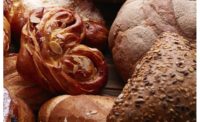What does clean label mean? How can you be certain your newly developed product meets today’s clean-label expectations while consumer demands continue to evolve? Today, clean label means looking at a wider picture and a more-flexible definition than it has in the past.
From the source of or types of ingredients to the level of processing, the concept of clean label has been evolving for a decade. What one might have considered clean label 10 years ago might not fit the description today. Oftentimes, consumers view food choices as lifestyle choices, and have different expectations across different product categories.
The industry is looking for options to meet demand, understanding the importance of meeting the changing consumer preferences. Careful selection of ingredients is critical to optimizing process and product character, all while ensuring that ingredients meet clean-label standards.
High-speed processing and packaging involve a level of tolerance that is not necessary in smaller production settings. Dough strength is critical, but not the only consideration. A balance in rheology—strength, tolerance, pan flow—is the first step to developing baked goods that meet the needs of both processors and consumers.
Gluten is known to build structure and volume in bakery applications, improving tolerance in high-speed commercial bakeries. Gluten may come from the flour or added vital wheat gluten as a clean-label dough strengthener. Optimizing strength from flour is usually the No. 1 choice in building the proper structure and tolerance, but that isn’t always an option. Availability, logistics, and storage can limit the flour choices at a facility. Adding in vital wheat gluten can help bakers fine-tune each formula to meet production and finished-product needs.
Vital wheat gluten, a simple, clean protein, produced by physical separation, is a highly effective dough strengthener. The production of vital wheat gluten relies on the same network we rely on for strength and structure in baked goods to separate flour into starch and gluten. Flour is wetted and mixed to develop the gluten network, and the starch is easily washed away. No chemical additives are needed for the physical washing and extraction process to produce this functional protein.
Vital wheat gluten is standardized, but wheat proteins made from vital wheat gluten can utilize the same network to bring a range of other functional benefits to clean-label products. While strength is an important aspect, an equal balance of relaxing is needed, too. With a range of elasticity and extensibility characteristics, wheat protein assures the necessary tolerance for a dough system.
Clean-label reducing or relaxing agents are just as important as strengtheners for efficient processing. Performance goals may require specific mixing needs, followed by a higher amount of resiliency throughout the line. For breads and buns, pan flow can help to create uniformity from piece to piece and batch to batch. Flatbreads and other sheeted products rely on dough extensibility, without excessive shrink-back to optimize production. Wheat proteins provide needed softening while maintaining the gluten network to maintain volume and texture in the finished product. Fine-tuning the dough consistency will produce the ideal process tolerance throughout the line.
Breakage and product integrity through production, packaging, and shipment can also require added ingredients. Oftentimes, bakers need a reducing agent for processing, and a strengthener to prevent breakage. The dual functionality of wheat proteins can soften the dough for processing and maintain the gluten network for needed product integrity further down the line.
Bakery and snack product textures are as diverse as the number of products available, and the production parameters have to line up with finished-product goals. From pancakes to bread, wheat protein is an ideal clean-label ingredient for optimizing texture, providing sponginess and resiliency in batter applications and volume and strength in doughs.
Vital wheat gluten has been a steadfast clean-label solution for baking long before clean label was a consideration. In some applications, other wheat proteins are a better fit and have the ability to meet the wide-ranging the needs of today’s consumer preferences.




